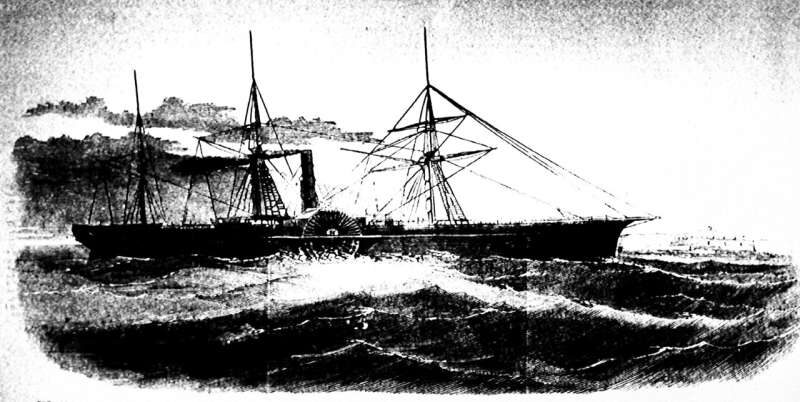
But scientists, historians and collectors say that the real fortunes will begin to hit the auction block on Saturday. For the first time, hundreds of Gold Rush-era artifacts entombed in the wreckage of the S.S. Central America will go on public sale.
Known as the "Ship of Gold," the steamship sank on Sept. 12, 1857, in a hurricane on its way from Panama to New York City. Most of the passengers boarded the S.S. Central America in Panama after traveling from San Francisco on another ship and taking the train across the isthmus.
Some 425 lives were lost and 153 people were rescued. For more than a century, many of their possessions — some still sealed in safes and passenger trunks — were preserved in the chilly, oxygen-deprived gravesite 7,200 feet (2,195 meters) under the surface of the Atlantic Ocean.
Bob Evans, the chief scientist for every underwater recovery mission, said that the items might seem ordinary, but they offer an extraordinary glimpse into the daily life of the passengers and crew, from gold-field workers to high-society San Franciscans.
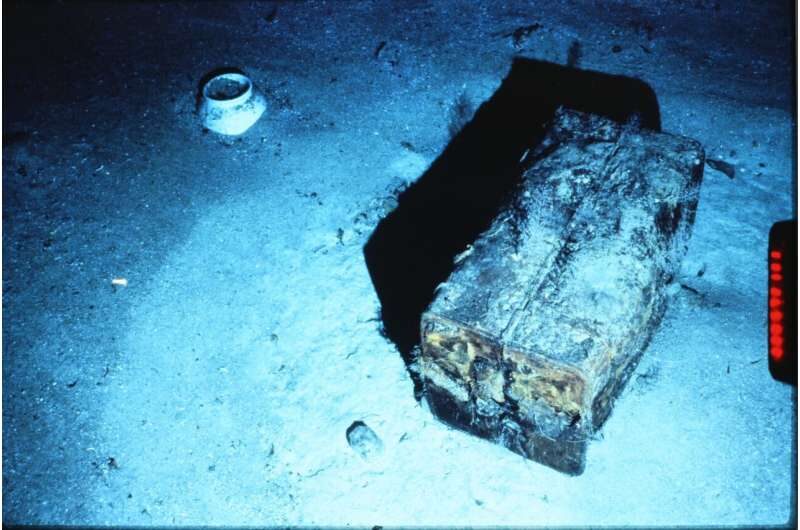
"Some collectors have been waiting for these extraordinary items to come on the market since the legendary, submerged ship was located in 1988 and Life magazine proclaimed it America's greatest treasure ever found," said Fred Holabird, president of Holabird Western Americana Collections in Reno. Originally, the deep-sea hunters who started searching for the pre-Civil War steamship in the 1980s had their eye on the same prize usually found in pirate chests.
"The goal here was the gold," Holabird said in an interview last week. "The goal was not artifacts."
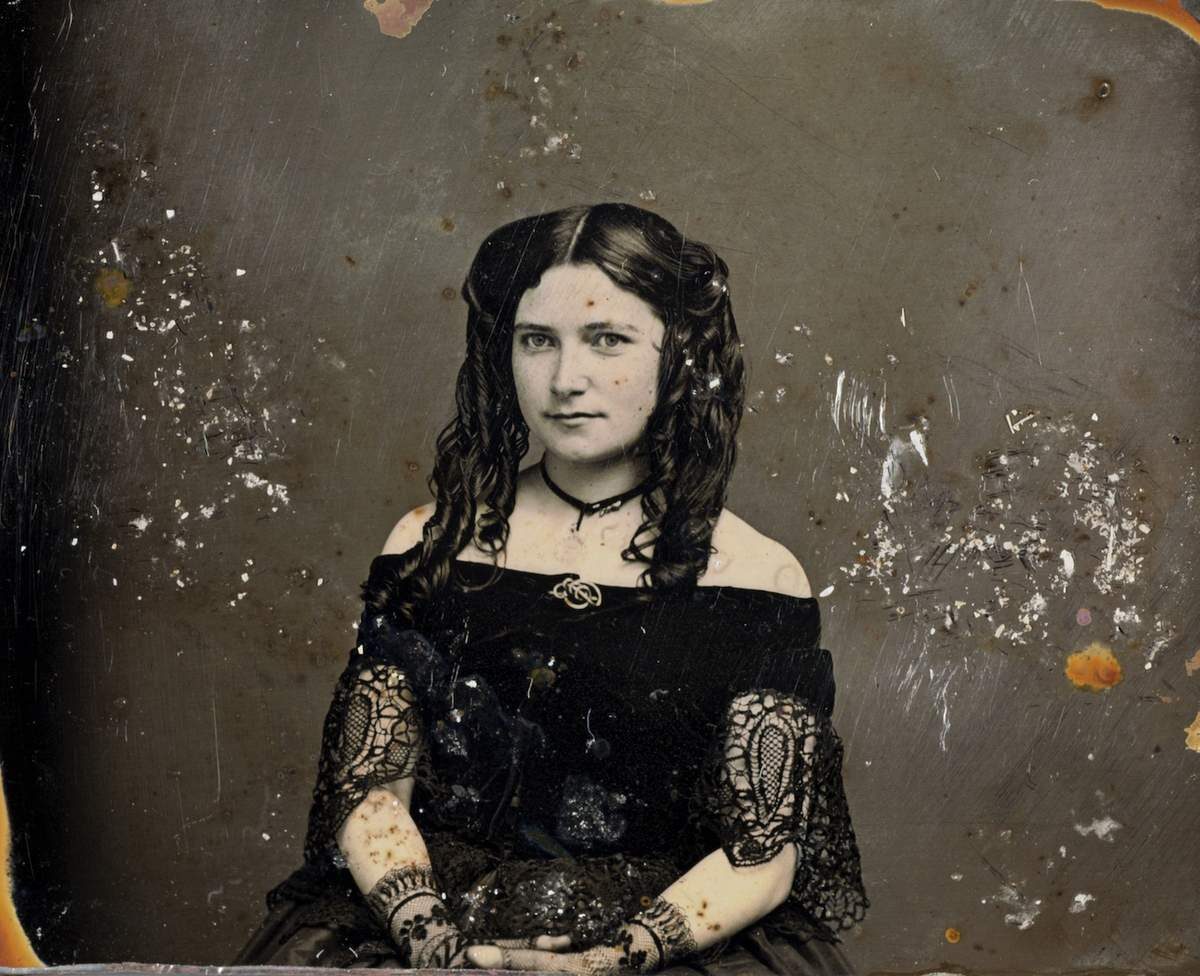
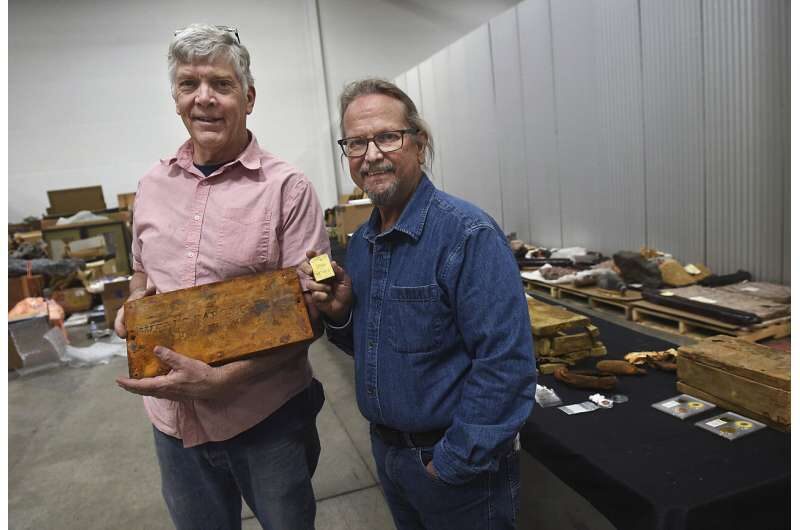
Evans described first-class cabins that included fine china, liquor cabinets with crystal decanters, hair creams in ceramic jars from Paris, solid gold spectacles and Wild West clothing.
"Truly refined society and blue collar miners all mixed together," he said in an email to The Associated Press.
Neil Dobsen, a longtime deep-water marine archaeologist from St. Andrews, Scotland who has excavated wreckages from the 17th century, said that the S.S. Central America is his "all-time favorite shipwreck ... a window of the past."
He said it was amazing to think that gold nuggets panned from streams in the Sierra foothills ended up on the bottom of the Atlantic.
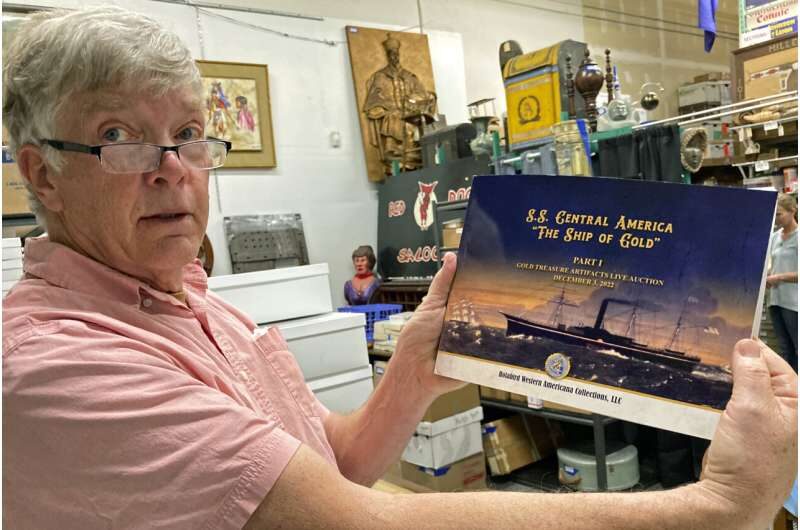
"Nothing," he said. "And I've worked on the best of the best. This is more special, because every piece has a story."
The discovery of the shipwreck and its treasures is not without drama: there has been a long legal battle in Florida, Virginia and Ohio involving the treasure hunter who first located the wreck. He was accused of bilking investors and has been in federal prison in Michigan since 2015.
The first gold coins and ingots from recovery dives in the 1980s were sold in 2000, with more items from a later recovery sold in 2017. The ship's bell was donated earlier this year to the U.S. Naval Academy.
"The 1980s and 2014 recovery trips had all personal effects and cultural treasures held and we just acquired them en masse three years ago," said Dwight Manley, managing partner of the California Gold Marketing Group, which owns the goods.
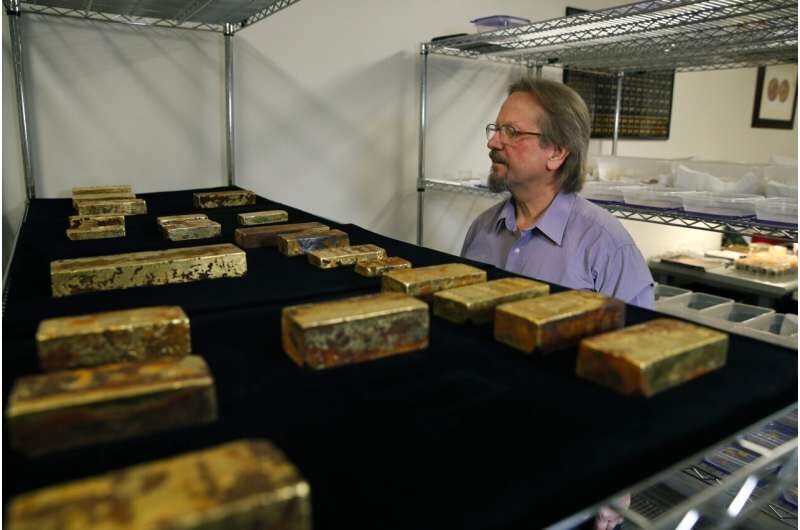
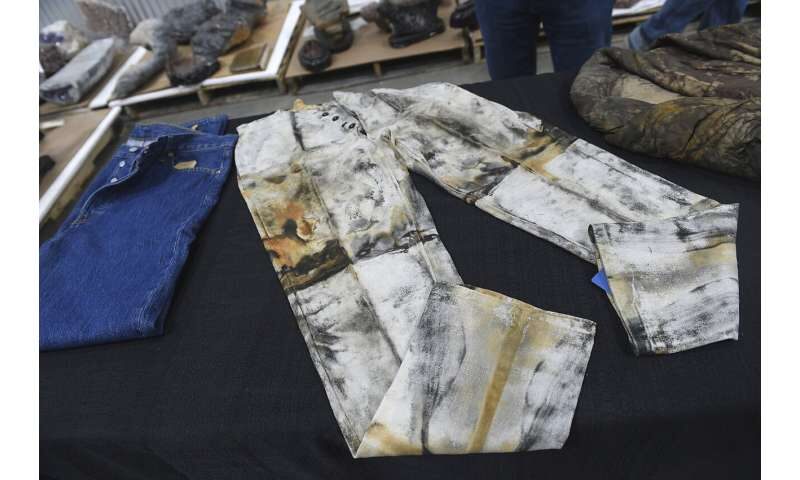
Tracey Panek, an historian and director of Levi Strauss & Co.'s archives, said in an email to AP on Wednesday that the artifacts from the ship are of interest to the San Francisco-based company "but stories about pants in the Dement's trunk being made by the company are speculation."
Holabird, who has done extensive research on the company's early history, is convinced that they were most likely made by a Levi Strauss subcontractor. "The buttons are exactly the same — almost identical," Holabird said. "The pattern's the same. Heavy cloth. There were no other pants like them."
And while the pants could prove to be the priciest, the contents of the Eastons' trunk have fascinated researchers at Ohio State University's College of Food, Agriculture and Environmental Sciences. The mix of cotton, linen, silk and wool presented a self-contained laboratory for studying the effects of long-term exposure without typical bacterial and biological degradation.
Manley called the shipwreck a time capsule of the California Gold Rush.
"These are all first-time offerings," he said, "unreserved and surely never to be duplicated as there are no missing gold rush ships out there."



Reader Comments